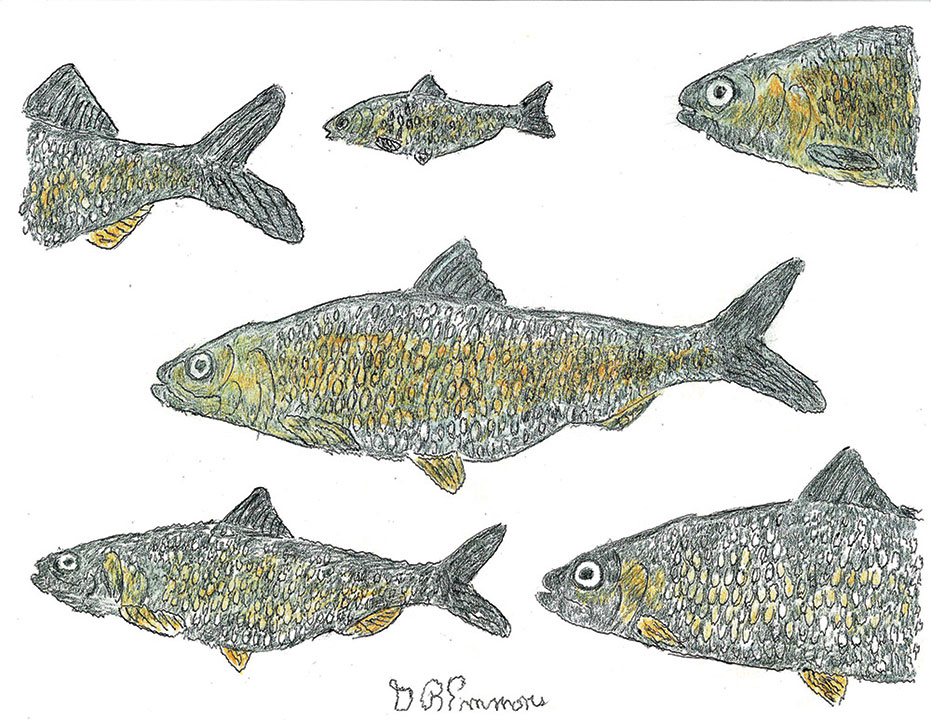In visiting the April Herring migration under the bridge on Route 6 just east of Mattapoisett Neck Road, you can tell herring are running out of the ocean into the river by a clamorous gathering overhead of gulls, ospreys and crows swooping down to feast on easy pickings of bait fish driven to the surface by this passing commotion.
This passage of herring out of the ocean and up the river to spawn in the very same pools of their own origin has a special environmental title of anadromous for this remarkable reproductive instinct.
Two species of herring are most common at this time of year, the Atlantic Alewife and the Blue Back herring. The Alewife prefers a water temperature of 51 degrees and the Blue Back at 57 degrees before they appear moving inland. With present climate change of global warming, both may already be on their way. Because of the industrial dam built in the early 20th century preventing fish passage, a special fish ladder has been constructed for their movement.
When herring see this convenient structure creating a current, the school climbs up into close formation to battle their way up to the last rung of the ladder, as in my illustration. However, today herring fishing in any Massachusetts coastal river has been banned by the state Division of Marine Fisheries to overcome a falling population in New England. However, you can still find fresh herring in some top restaurants and seafood shops, where it has been canned, pickled or smoked for a more delicate flavor than the oilier, pungent-flavored fish.
You may wish to take your children or grandchildren to the nearby Mattapoisett herring location where long ago, Wampanoag Indians came to the same clearing for the natural spring event and enjoyed herring for a change in their winter diet from the everyday deer and rabbit.
There is a similar fish-ladder park in Middleborough just a half-hour drive away and farther up the coast to Plimoth Patuxet, where later in time the Pilgrims were saved in spring by the April herring run from starvation during the previous winter by getting badly needed protein in their diets.
Later in history, General Washington’s starving troops at Valley Forge next to the Delaware River were similarly benefited by very historical herring run. Even today in Buzzards Bay, we can be aware of this environmental meaning of a Spring Herring anadromous migration to celebrate and appreciate for future generations to come.
By George B. Emmons
